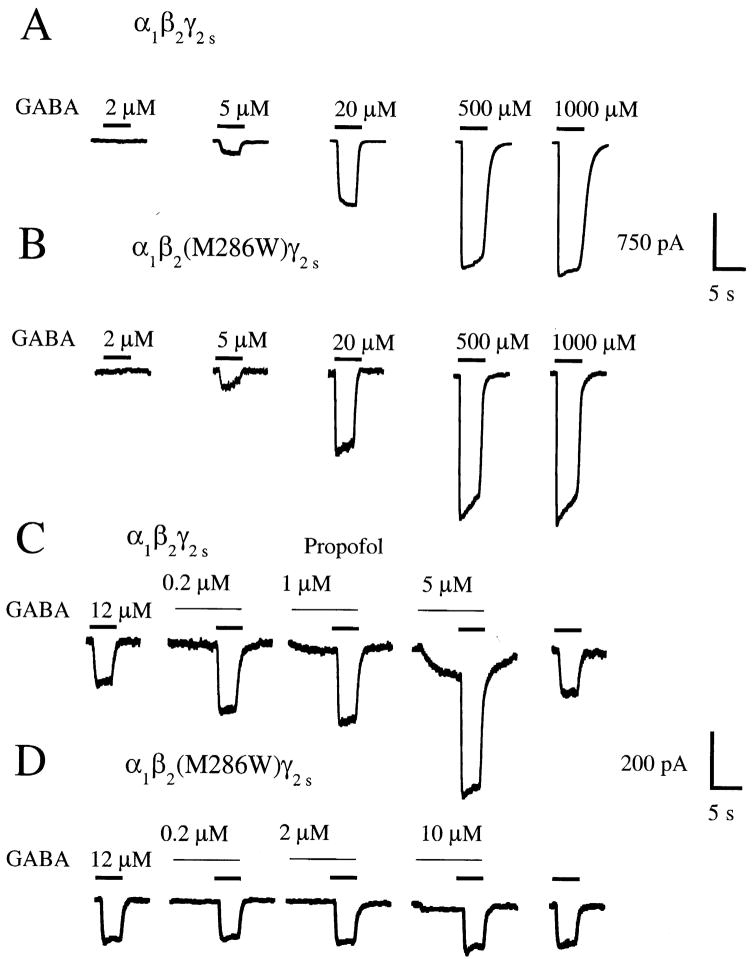Fig. 2.
GABAA α1β2γ2s and α1β2(M286W)γ2s receptors have similar sensitivity to GABA, but the α1β2(M286W)γ2s receptor is insensitive to the modulatory effects of propofol. (A) and (B) Traces from individual HEK 293 cells expressing either GABAA α1β2γ2s or GABAA α1β2(M286W)γ2s receptors in response to application of 2, 5, 20, 500, and 1000 μM GABA. Time of application is indicated by the bars above the traces. (C) Submaximal (EC20) GABA current responses at the wild-type GABAA α1β2γ2s receptor are enhanced by co-application of 0.2, 1, or 5 μM propofol. Note also the direct activation by 1 and 5 μM propofol, evident during the pre-application of propofol. (D) In contrast, propofol does not potentiate submaximal GABA currents at the GABAA α1β2(M286W)γ2s receptor, but does produce direct receptor activation at a concentration of 10 μM. Traces shown in (A)–(D) are recordings from individual HEK 293 cells transfected with cDNAs encoding the indicated receptor subunit combinations.

